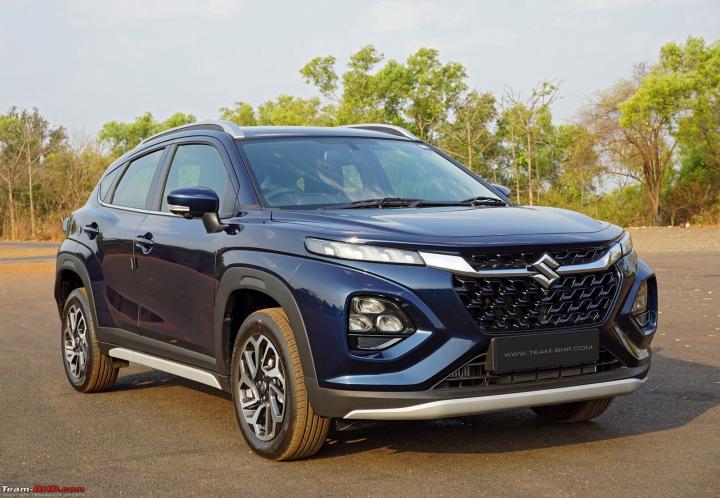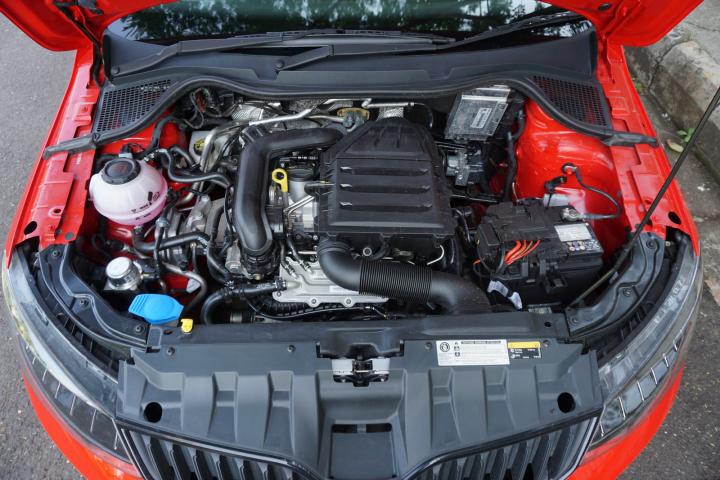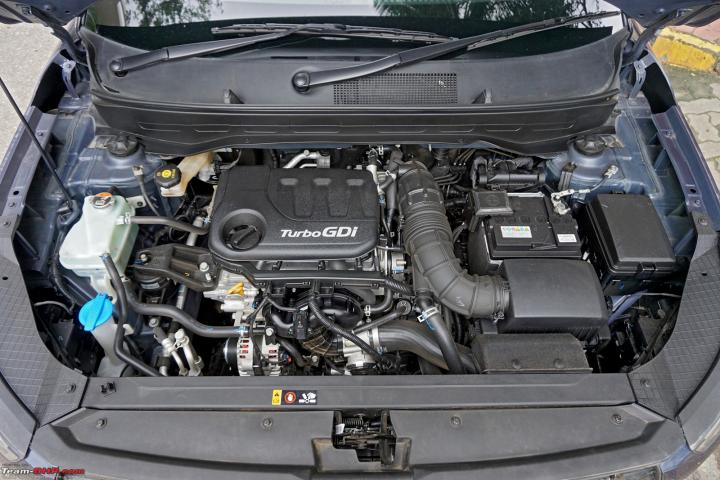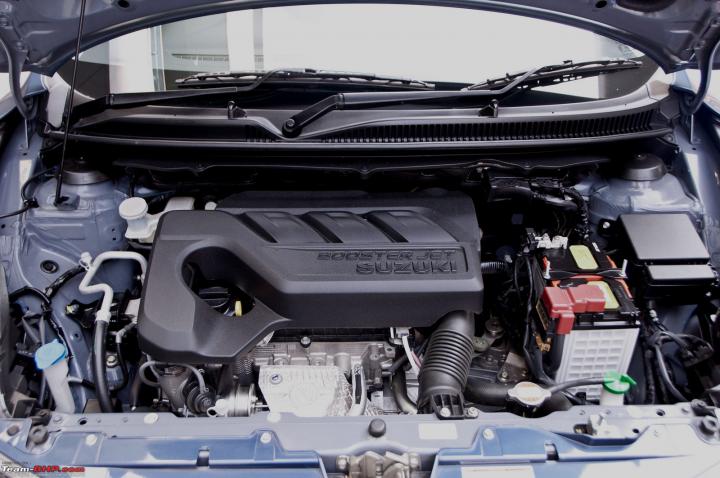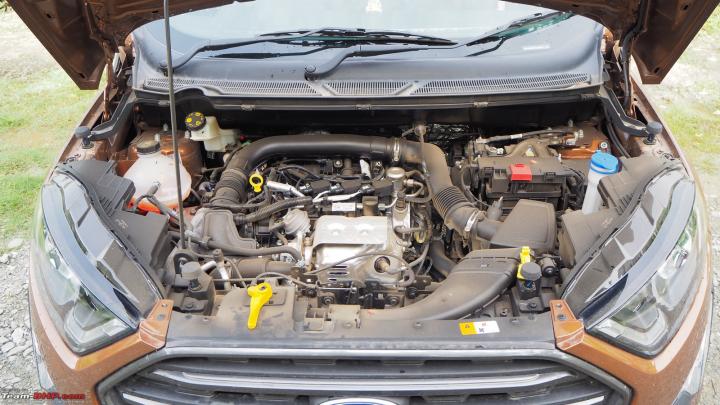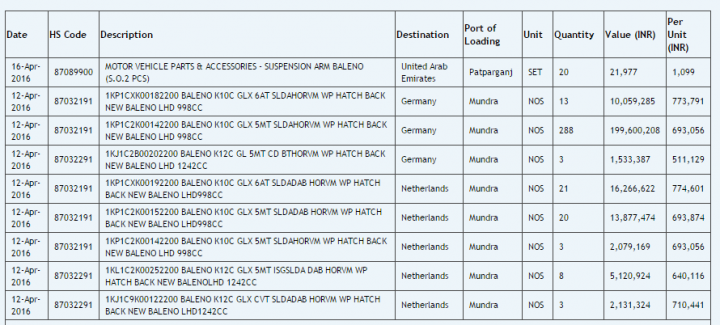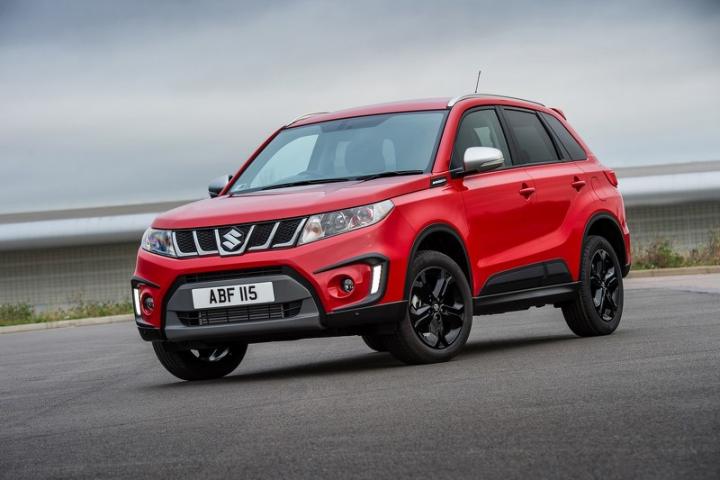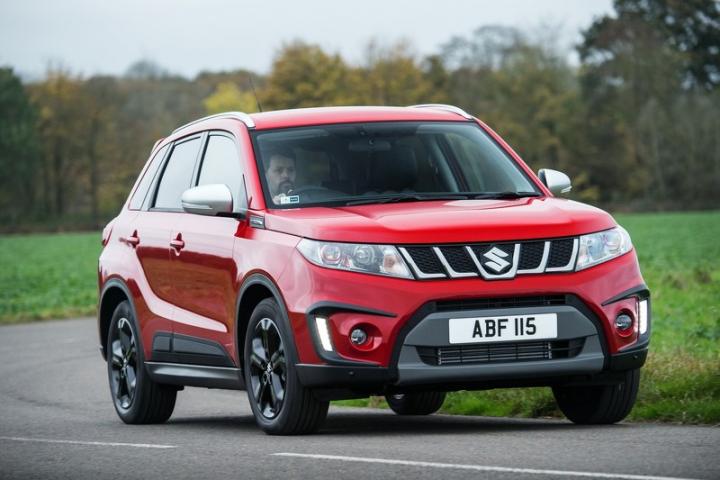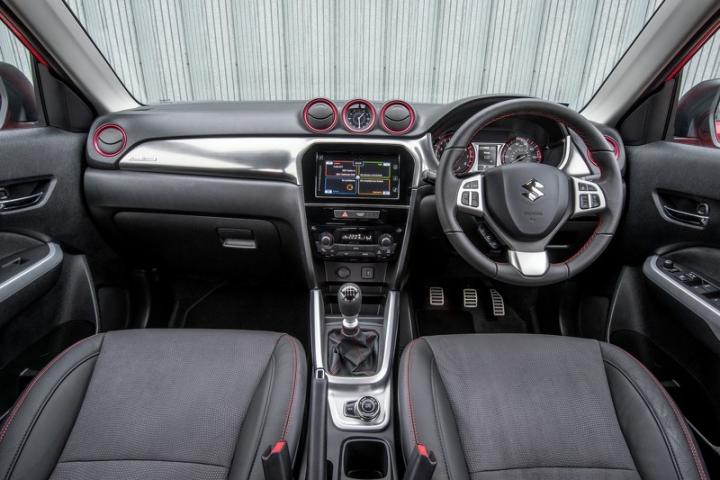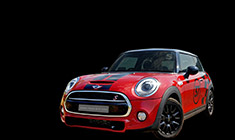News
Honda City CVT owner drives the Fronx Boosterjet AT: 6 key observations
The car felt planted at turns at 80kmph and quick lane changes at highway speeds. I felt, this was at par or maybe even slightly better than the City.
BHPian vvs29 recently shared this with other enthusiasts.
Hi folks. We went for a 80+km test drive of Fronx Alpha AT today and thought I'll share my expectations and impressions here.
To give a bit of context about us, we have a 2012 A Star VXI AT (bought at 37k in late 2016) and a 2014 Honda City SV CVT (bought at 33k in 2018 by exchanging a 2014 Amaze S MT which had covered 35k kms). Both having completed 70k kms, both had tyres and suspension replaced in the last 1 year. Both are ASS maintained. I'm 6' 4" 110kgs and my wife is 5' 3", 70 kgs. Our driving is mostly in the city with 4-5 highway trips a year.
I had bought the A star as a cheap automatic for my wife to learn driving in. The plan was to keep it till she learns and then replace with something better in a couple years. However, I instead upgraded my Amaze to a City , for better seating comfort, power and auto gearbox so she can also drive it. So was looking for an upgrade in the sub 4m space as my wife feels that more her size, even though she has taken the City to all the same places as her A Star without any issues. And I must admit, every bit matters during parking in busy areas (cough T Nagar cough). While the 1.2L class of engines will have enough grunt for the city, I am also looking for a car that can do highway duties, which for me means:
- 100-120 acceleration should be at least a good as the Honda City.
- Handling should be decent, minimal body roll during curves at 80-85 kmph and quick lane changes.
- Suspension should be balanced enough for good low and high speed ride quality.
The idea behind a good handling highway car, is that this will allow us to replace the City with a 7 seater MPV in the future which can be used to travel together in with extended family members (I'm not going to drive zestily with that crowd for my own good :P, and neither will the car allow me to). In addition to the above, there are the general requirements in a car, in order of importance:
- Reliable
- Decent service experience and parts availability
- Stable body shell in crash test
- Low NVH
- TC or CVT. Maybe iMT/DCT if everything else fits, but thankfully, the ones that do give them fail in the above 3 aspects, saving me the confusion.
- Big enough to seat 4/5 people with me at a comfortable spot in the front (A star cannot seat anybody behind me when I'm driving
- Good mileage
- No sunroof (eats into my headroom and the non panoramic ones don't really improve the experience for me)
- Creature comforts but not really interested in gimmicks
The Tata Altroz DCA is slow and not that much of an upgrade in performance from the A Star. iTurbo does not come with an auto box. Rest of Tata's lineup is AMTs and worse ones than MS (they are deal breaker slow for me, even in manual mode). Even if I wait for Nexon DCA, the refinement and service are still question marks. XUV 300 is AMT as well, and from what I've read online, only a fraction faster than Tata and not in the same league as MS or Hyundai.
None of Hyundai's lineup has a stable body shell. Even if I ignore that for the turbo petrols with DCT, they cost 14+ on road and I would prefer MS lineup instead at that price.
Honda has only the Amaze. A used Amaze diesel or Jazz were considered as well. I backed out of the Diesel due to low NVH, the discontinued engine and because the copy I found had some battery issues. The petrols didn't have adjustable headrests at the back (something that the A star has, WTH Honda!!), no rear AC vents, the 100-120 acceleration isn't much to look forward to and noise insulation isn't great either. But it is very VFM at 11.5L onroad for a new Amaze top end and 8L for a 2019/2020 35k odd run used copy.
Kiger has a good powertrain, but service is a question mark. The NVH seems to be low based on multiple reviews.
Kushaq pulled at my heartstrings because that is the one car that fit me the best in the driver's seat (though not perfectly). It's turning radius is 5.2, same as brezza and isn't too much wider or longer than it either. However, the bad reports in reliability and service even for the TC variants along with a much bigger price sticker ruled it out.
The ones in MS which satisfied safety were Baleno, Fronx and Brezza. Almost all the requirements are met by the Baleno, except a quick 100-120 and the type of auto gearbox. I have driven an AMT Swift during a road trip in Kerala. While I can accept the jerks, the reliability concerns and the momentary failure of the gearbox during that trip where it refused to change from N to D without restarting the car is preventing me to go for it. That incident created an aversion in me to AMTs, because this happened when we had reversed out of a restaurant parking and into the road, and the car refused to go to drive causing a small pile up of traffic. I don't want this to happen when my wife is driving without me.
The Brezza has a sunroof in the higher variants and I thought the Fronx would have better roll on acceleration due to the turbo and the slightly higher torque. So had requested for a long test drive for the Fronx which I just completed today.
After a long winded context setting, here are my impressions of driving the Fronx:
- The suspension is better at handling bolts on speed breakers and potholes than even the City which causes a bit of a jerk, while this was more cushioned. At moderate speeds, while the potholes are held, they are barely felt by the body. However, on concrete roads at 80-100kmph, it felt as if the car is shaking. Not something I felt in the City. The stupid and steep mini ramps which connect the plain road with a bridge also did not send sharp jerks.
- The torque converter is fast. Well maybe not as fast as the DCTs, but it was faster than the City and A Star. The shifts in manual mode are even faster.
- The throttle response is balanced. If I'm gentle, it keeps things smooth. If I press down harder, it drops even two gears quickly and surges ahead. I didn't even have to go full throttle.
- While the engine is audible outside the car (I can barely hear the City at a distance and I could clearly hear the Fronx), inside the car, the engine noise does not filter in much. Engine and road noise was also well contained even at 120. I'm wondering if changing the tyres to XM4s or UC6s will not show significant difference or if the cabin will be even more silent. My wife didn't even realize she went to 120, when she generally stops at 100-110 in the City. I think this has to do with the better mid range. Even when I was driving, the RPM barely went above 4k and never above 5k even when I was demanding power. In the City, I easily go above 4k consistently.
- Body roll was very well contained and handling was also good for me. The car felt planted at turns at 80kmph and quick lane changes at highway speeds. I felt, this was at par or maybe even slightly better than the City. Stability in the start of continuous beep zone was okay but it did not inspire confidence to go further, while the City has no problems going to silly speeds in a straight line. Doesn't matter much for us since we barely go into that zone.
- Indicated FE at the end was 12.8 kmpl. For some reason the mild hybrid system was not working. The Auto start stop was on, but it kept saying it's unavailable. The battery didn't charge during braking or slowing down either and was at 2 bars throughout the drive.
I have requested a test drive of the Amaze, to see if the extra 3.5L are worth it. It seems to be for now, but will drive it before making up my mind.
Also, the only thing I care about in Alpha variant are the UV cut glasses and maybe the 360 deg camera and a bigger ICE unit.
I read in the XL6 thread that the UV cut glasses do work and are not a gimmick. 360 camera should make things easier for the wife. And a bigger screen should help with quickly identifying icons in the cluttered UI. However, not sure if paying an additional 1.1L for them is worth it. If UV cut glasses were no there, I would even be thinking about this variant.
Check out BHPian comments for more insights and information.
News
Your favourite 1.0L 3-cylinder turbo-petrol engine in India
Click here to read BHPian comments!
Last year, we had voted for our favourite 1.5L diesel engines, a size which has become quite the trend among oil-burners. Now, let's turn our attention to the small capacity, yet powerful and fun-to-drive turbocharged petrol engines that have been seen in Indian cars. Downsizing & ever tightening emission norms will only see this breed grow. We wish Honda had brought in their 1.0L turbo-petrol in the City (they sell it in Thailand).
Hyundai Kappa 1.0 Turbo GDI
Hyundai jumped into the fray in '19 with this 998cc, 3-cylinder unit. Introduced in the Venue, it puts out 118 BHP @ 6,000 rpm and 172 Nm @ 1,500 - 4,000 rpm, and is coupled to a 6-speed MT or a dual-clutch AT. A less powerful version has been used to power the Aura & Grand i10 Nios. Hyundai's offering has the best refinement among the 1.0L turbo-petrols and it is quite an all-rounder. No wonder Hyundai is pushing it in all of its mass-market cars. Hyundai's Turbo GDI is not only practical, but it is also fun to drive!
Volkswagen / Skoda 1.0 TSI
The latest entrant into the club is Volkswagen's 999 cc, TSI engine that puts out 109 BHP @ 5,000 - 5,500 rpm and 175 Nm @ 1,750 - 4,000 rpm. This unit produces the most torque among all the contenders listed here and is mated to a 6-speed manual transmission (6-speed torque converter AT will be coming soon). It powers the Polo & Rapid today, and will be under the hood of a long list of VAG cars in the future. This engine is easily the most revv-happy & it does have a healthy top-end. Downside? The refinement levels at high rpm are poor. Knowing VW, we have our fingers crossed on its long-term reliability too.
Maruti-Suzuki 1.0 Boosterjet
This motor was used to power the Baleno RS. In typical Maruti style, they gave it a funeral before it had a fair chance to live (same fiasco with the S-Cross' lovely 1.6L diesel). The Boosterjet was based on the familiar K10 unit. With 101 BHP @ 5,500 rpm and 150 Nm @ 1,700 - 4,500 rpm on tap, it is the least powerful of the engines listed here and the only one to be mated to a 5-speed manual. However, it had minimal turbo lag and an enjoyable mid-range. Disadvantages = not much of a top end, limited max revs and the price (1.5 lakhs over the 1.2L n/a petrol).
Ford 1.0L EcoBoost
This engine was the torchbearer of small turbo-petrols & introduced us to this trend almost a decade ago! It was used by Ford to power the EcoSport and while it has been discontinued now, with 123 BHP on tap, it remains the most powerful 1.0L turbo-petrol to be sold in India. Ford itself made the EcoBoost irrelevant by introducing that awesome 1.5L naturally-aspirated Dragon engine in the EcoSport. The 1.0L EcoBoost was also laggy, unrefined and delivered sub-par fuel economy.
Related Thread: Small turbo vs big N/A engines
News
Rumour: Maruti Baleno RS AT to get paddle shifters
According to media reports, the upcoming Maruti Baleno RS might come with an automatic gearbox with paddle shifters. If these reports indeed come out to be true, the Baleno RS will be the only car in its segment to get this transmission setup.
Maruti Suzuki showcased the Baleno RS at this year's Auto Expo in Greater Noida. It is essentially a higher performance version of the Baleno hatchback, which is currently sold through the automaker's premium dealership network called NEXA. The RS is expected to be launched in India during this year's festive season.
The Baleno RS will be powered by Suzuki's new 1.0-litre BoosterJet petrol engine that pumps out 109 BHP and 160 Nm of torque. This mill is reported to come with a 6-speed AT with steering mounted paddle shifters.
Currently, the only hot hatch in the segment that comes with an automatic gearbox is the VW Polo GT TSI. This car comes with a 7-speed DSG, but misses out on the paddle shifters. Meanwhile, the Abarth Punto gets a 5-speed manual gearbox.
Source: GaadiWaadi
- Tags:
- Indian
- Baleno RS
- Boosterjet
News
Maruti Suzuki builds & exports Baleno turbo-petrol to Europe
Thank you Utkarsha Mohan for sharing this information with other enthusiasts!
Earlier this year, we had reported that Maruti Suzuki had started exports of the Baleno hatchback to Europe. The cars exported then, were powered by a K12C (1,242cc) petrol. Later, Maruti started exporting the Baleno to Japan as well, where the car is being sold with a 1.0-litre Boosterjet turbo-petrol engine along with a 1.2-litre naturally aspirated petrol unit.
Now, Maruti has exported a large number of the Baleno turbo-petrol to Europe. According to Zauba, some of the countries that the car has been exported to are Belgium, Sweden, Slovenia, Denmark, Germany, Greece and the Netherlands. While some of the cars have a 5-speed manual gearbox, some have a 6-speed automatic trasnmission. The declared prices of the exported cars range from Rs. 5.93 lakh to Rs. 7.74 lakh.
The Boosterjet engine is a 998cc, 3-cylinder, turbocharged petrol unit that makes 110 BHP and 170 Nm of torque. It was displayed in the Baleno RS concept at the 2016 Auto Expo. Maruti Suzuki is expected to launch it in India during the 2016 festive season.
India was the first country where the Baleno was launched. Maruti had disclosed that the car would be manufactured in India and exported to more than 100 countries around the world.
- Tags:
- Indian
- Baleno
- Baleno RS
- Boosterjet
- Export
News
Maruti Vitara Brezza likely to get 1.0L Boosterjet petrol
It looks like the 1.0L Boosterjet petrol engine has been all, but officially confirmed for the Maruti Vitara Brezza compact SUV. Maruti Suzuki presented the 998cc, 3-cylinder, 12-valve turbo-charged (and intercooled) petrol engine at the 2016 Auto Expo. The engine makes 110 BHP @ 5,500 rpm and 170 Nm of torque @ 2,000 - 3,500 rpm, and will be offered with the Baleno RS that will be sold through the NEXA premium dealer network. This engine is likely to be offered with the Vitara Brezza as well.
This has been speculated earlier as well due to two main reasons:
- Maruti Suzuki has presented the engine and confirmed that the Baleno RS will receive it. The Boosterjet is being imported for re-exports to global markets (in the Baleno), which would make it simple to manage the logistics.
- Maruti's existing petrol engines won't work for the Vitara Brezza. It is based on the Suzuki global C platform that underpins the full-sized Vitara and has a kerb weight of 1,170 kg - just 10 kg less than the S-Cross. Maruti's 1.2L petrol would fit into the excise limitation, but would be far too weak for this car. The 1.4L petrol in the Ciaz and Ertiga could offer the grunt needed, but would put it beyond the benefits offered in the excise slab.
As per a report by Autocar India, the 1.0L engine will be directly imported for the Baleno RS and Vitara Brezza. Autocar's source stated that the volumes of the Vitara Brezza and Baleno RS wouldn't justify the engine's local production as the minimum production scale would have to be at least 1,00,000 units a month. This of course, raises questions about the production costs, which is a factor that complicated matters for the Maruti S-Cross 1.6 DDiS 320.
The Vitara Brezza petrol could be launched in the festive season this year. Apart from the engine offered, all eyes will be on the petrol variant's price.
The Vitara Brezza is currently only powered by the 1.3-litre (DDiS 200), 4-cylinder, Fiat-sourced diesel engine that produces 89 BHP (@ 4,000 rpm) and 200 Nm of torque (@ 1,750 rpm). The car is available with a two-wheel drive configuration only and power is transmitted to the front wheels through a 5-speed manual gearbox.
News
Scoop! Maruti Baleno 1.0L turbo-petrol caught testing
Thank you to Naren Konamme for sharing these pictures and information with other enthusiasts!
Maruti Suzuki has started testing a more powerful version of the Baleno hatchback. The car was spotted at a hotel parking lot in Cochin. Naren spoke to the team of Maruti engineers who were staying in the same hotel and got some information about the car.
The car was spotted in black colour. It might be noted that the Baleno isn't sold in black at present.
The Baleno under test was powered by a 1-litre Boosterjet engine. At present the Baleno is available with only one petrol engine in India - a 1.2-litre, 4-cylinder unit that puts out 83 BHP and 115 Nm of torque. The Boosterjet engine has 3 cylinders and a turbocharger. It develops 110 BHP and 170 Nm of torque. Naren claims that the engine sound was a little more compared to his new petrol Baleno.
The Baleno Boosterjet was being benchmarked against the Volkswagen Polo GT TSI and both cars were being driven back to back. The Baleno had a 5-speed manual transmission (the Polo is only available with a 7-speed automatic).
The car under test was an export model and had additional safety features such as side airbags, all four disc brakes, tyre pressure monitoring system and radar-based brake support (which was showing as disabled in the MID).
The body panels and doors felt the same as the Indian Baleno. When he asked whether the body shell is the same for the Indian and export models, the engineer replied in the affirmative. The alloy wheels were different and looked a lot better than the ones found on the existing car. The kerb weight of the car is about of 950 kg (regular Baleno weighs 865 kg).
Coming to the interiors, the seat fabric etc. were the same as the regular Baleno.
Maruti is testing the Baleno Boosterjet in various parts of India. Cochin was chosen for its coastal climate. The car is likely to be launched India in mid or late 2016. The company is planning to launch it as the "fastest hatchback" in the country.
Naren was not allowed to click interior shots of the car. However, he did manage to get a couple of exterior shots.
- Tags:
- Indian
- Baleno
- Boosterjet
News
138 BHP Suzuki Vitara S launched in the UK
Suzuki has launched the Vitara S in the UK and the variant goes on sale from January 2016. The Vitara S comes equipped with a 1.4L Boosterjet direct injection turbocharged engine that makes 138 BHP @ 5,000 rpm and 220 Nm of torque from as low as 1,500 rpm. The Vitara S also comes equipped with the ALLGRIP four-wheel drive system with the grunt sent to the wheels through the standard 6-speed manual or optional 6-speed automatic gearbox.
The S model gets features like 17-inch gloss black alloy wheels, a different front grille design, satin silver wing mirrors, LED headlamps, a rear roof spoiler and black body side moulding. On the inside, the car features red stitching, red accents for the AC vents / instruments and aluminium floor pedals. These features come in addition to the 7 airbags, DAB radio with USB and Bluetooth connectivity, cruise control and automatic climate control that come as standard on the Vitara range.
The Vitara S is offered in bright red, cool white pearl metallic, galactic grey metallic and cosmic black metallic. Prices in the UK stand at £20,899 (INR 21 lakh approx.) for the manual and £22,249 (INR 22.34 lakh approx.) for the automatic.



